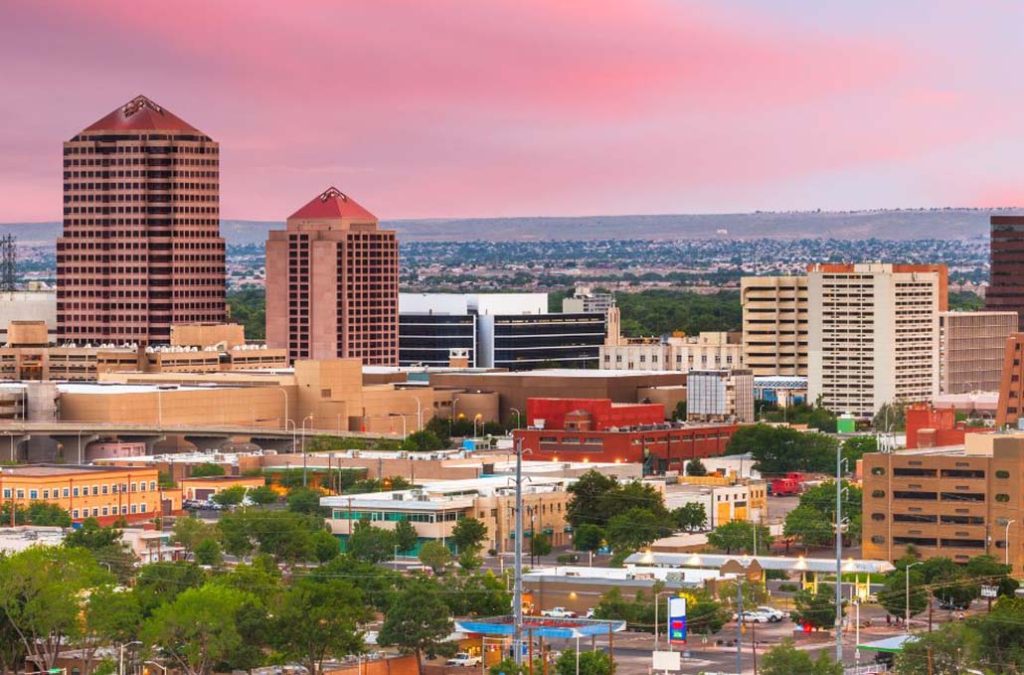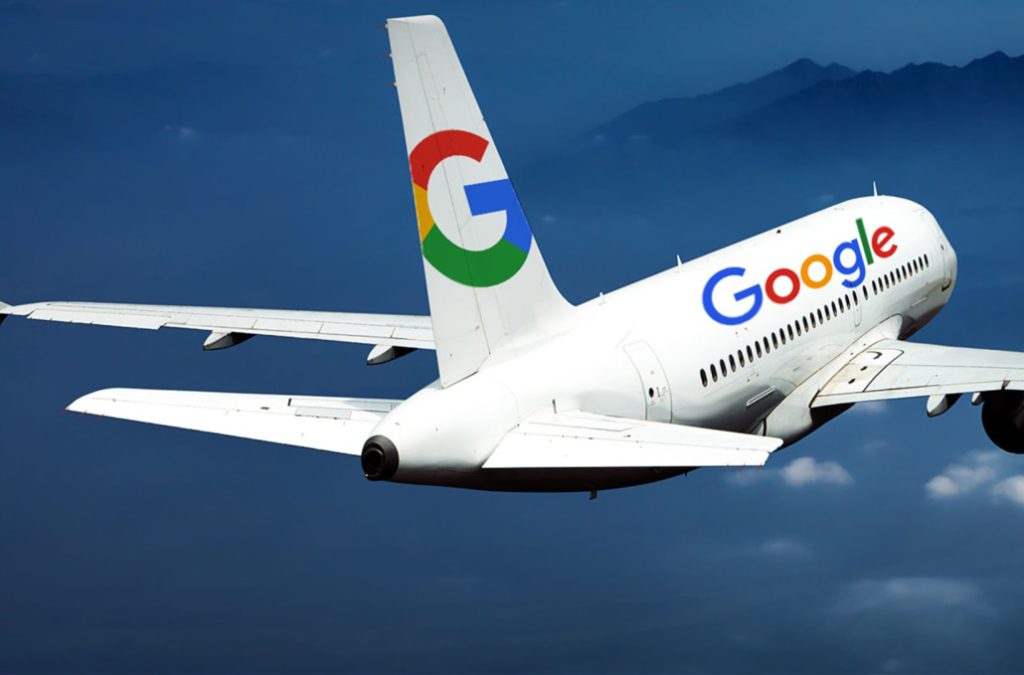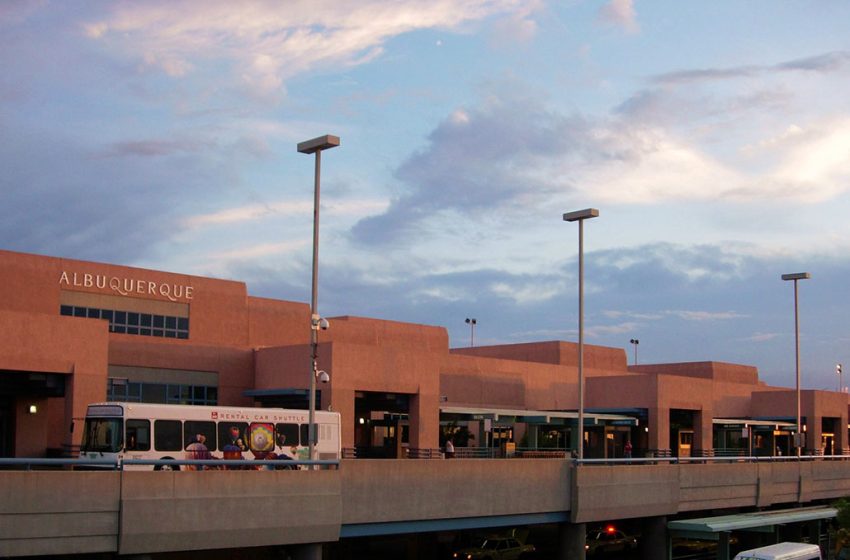When I first planned my trip to Albuquerque, New Mexico, the biggest challenge wasn’t the itinerary or choosing a hotel—it was figuring out how to find a reasonably priced, well-timed flight with manageable layovers. Booking a flight to a less-popular destination is often more complicated than expected, but precisely because of that, I’ve developed a reliable booking strategy over the years.
This Albuquerque trip took place in late May. I started monitoring flights two months in advance and tried every method—price comparison, flexible dates, layover combinations, and even mileage redemption. In the end, I paid less than $600 to fly from Europe to Albuquerque with a well-timed, smooth connection. Here’s my full process and thought behind booking that flight—hopefully, it’ll help if you’re also planning a trip to the hot air balloon capital of the world.
1. Choosing the Right Time: Is May Ideal for Visiting Albuquerque?
Let’s begin with why I chose May to visit Albuquerque.
This city hosts the world-renowned International Balloon Fiesta every October, during which flight and hotel prices often triple—and so do the crowds. In contrast, while May doesn’t feature any major festivals, the weather is pleasant, with daytime temperatures around 25°C (77°F), plenty of sunshine, and ideal conditions for hot air ballooning or outdoor adventures like hiking and road trips.
I picked May because the ballooning companies are still operational, the number of visitors is moderate, and I could enjoy a serene city atmosphere on a more reasonable budget.
Once I nailed down my travel dates, I began tracking fare trends. Booking around 60 days in advance is, in my experience, the sweet spot—airlines typically release their full fare structures by then, giving you both early access and stable pricing without the last-minute scramble.
2. Departure City & Route Strategy: Why Is Albuquerque Hard to Fly to Directly?
Although Albuquerque is New Mexico’s largest city, its airport—Albuquerque International Sunport (ABQ)—is relatively small. Unlike Los Angeles or Chicago, it doesn’t offer many direct international connections.
So if you’re departing from Europe or Asia, direct flights to Albuquerque are rare. You’ll almost always need to connect through one or two major U.S. airports. Common layover hubs include:
- Dallas (DFW)
- Denver (DEN)
- Atlanta (ATL)
- Phoenix (PHX)
- Chicago O’Hare (ORD)
- Los Angeles (LAX)
My recommendation: widen your search to include major West Coast U.S. cities instead of targeting Albuquerque directly. Flights to Los Angeles, Denver, or Dallas are more frequent and competitively priced. In many cases, it’s cheaper to book a flight to one of these cities and then a separate domestic leg to Albuquerque.
For example, flying from Western Europe, I found a special fare to Denver for around €460. Then, I booked a short domestic flight to Albuquerque on Southwest Airlines for under $100. The connection was smooth, and the total cost was significantly lower than booking a direct international itinerary.
3. Using Fare Comparison Sites: Not Everyone Knows the Best Value
When it comes to choosing flights, I always cross-check multiple fare comparison platforms. Prices and route options can vary from one site to another, and sometimes even the suggested layovers differ.

Here are the platforms I use most:
- Google Flights – Clean interface, fast loading, and ideal for browsing flexible dates and price trends.
- Skyscanner – Great for exploring if your departure or return date is flexible; often shows low-fare combinations.
- Kayak – Good for multi-airline searches and sometimes surfaces hidden “mix-and-match” fares.
- Momondo – Shows more OTA (Online Travel Agency) prices in some regions; good for finding occasional “mistake” fares.
- ITA Matrix – For advanced users; allows customized search logic, like forcing specific layover airports.
I usually start with Google Flights and check flexible dates for routes from my city to Denver, LA, and Dallas. Then I cross-reference with Skyscanner and Kayak. Sometimes I find lower fares via third-party agencies listed on these platforms.
4. Avoiding Peak Travel Times: Flexibility Equals Savings
When planning flights, I always prioritize avoiding high-demand travel days—not just for the lower fares but also to ensure a smoother, less stressful airport experience. Weekends, particularly Fridays and Saturdays, are the most popular departure days, which means prices often spike and airport crowds can be overwhelming. Conversely, flying mid-week—especially on Tuesdays and Wednesdays—can unlock surprisingly low fares. I also keep an eye on the U.S. calendar for major holidays like Memorial Day, Independence Day, and Thanksgiving, since fares tend to rise sharply in the days before and after these dates.
By using Google Flights’ “+/- 3 days” tool, I noticed that shifting my outbound flight by just one day saved me nearly $80. That’s more than enough for a great dinner or even a local excursion in Albuquerque. If your travel plans are flexible, I highly recommend checking surrounding dates—you’d be surprised how much one day can affect the total cost.
5. Using Miles & Points: Not Just for Business Class
Frequent flyer miles and credit card points aren’t just for luxury upgrades—they can be powerful tools for cost-effective travel, especially to destinations like Albuquerque, where cash fares can be unpredictable. For example, my friend redeemed just 50,000 United MileagePlus miles to fly from Frankfurt to Albuquerque, routing through Chicago. He only paid around $60 in taxes and fees. Considering the equivalent cash fare was nearly $800, this was a remarkable deal.
To get the most value, consider partner airlines and flexible programs. Programs like ANA Mileage Club, Avianca LifeMiles, and Air Canada Aeroplan often offer better redemption rates than U.S. carriers for the same routes. For short U.S. domestic legs, British Airways Avios can be incredibly efficient—just 7,500 Avios for a flight like Dallas to Albuquerque, sometimes with no surcharges.
If you hold transferable points like Amex Membership Rewards, Chase Ultimate Rewards, or Citi ThankYou Points, explore transferring to airline partners. Even if you don’t redeem points this time, combining miles with cash is a great way to lower costs without sacrificing convenience—especially on routes with limited award availability.

6. Choosing Airlines & Layover Experience: Comfort Is Part of the Value
While saving money is always a goal, I’ve learned the hard way that cheap flights with inconvenient schedules or long layovers can ruin a trip before it begins. For this reason, I always weigh the total experience—not just the ticket price. I aim for layovers between two and four hours, ideally during daytime hours to avoid fatigue. Redeye flights with 6+ hour layovers in the middle of the night are a big “no” for me, especially if I have more travel or activities planned the next day.
For my trip, I chose a flight from Paris to Denver, with a smooth connection onward to Albuquerque. The total travel time was under 17 hours, and I arrived well-rested and ready to explore. I also carefully considered the carriers—legacy airlines like United, Delta, and American often offer better connection handling, baggage transfers, and on-time performance. In contrast, low-cost carriers such as Spirit or Frontier can appear cheaper up front but quickly become more expensive once you factor in baggage, seat selection, and even carry-on fees.
Also, understanding airline hubs helps make better choices. Denver is a hub for United Airlines, while Dallas is a major American Airlines base. Choosing flights that align with these hubs often results in more options, fewer delays, and better overall coordination—something that makes a real difference when flying into smaller airports like Albuquerque.
7. Small Details Make the Difference: From Baggage to Credit Card Perks
The true cost-effectiveness of a flight often comes down to small details:
- Baggage policies: Does the fare include checked baggage? Are the two legs on airlines that can interline bags? Avoid unexpected charges at layover airports.
- Buffer time: Always allow enough time for transfers—especially in U.S. airports, where immigration and customs can take over 90 minutes.
- Credit card perks: My travel card covered one checked bag and lounge access during layovers—both of which made the journey more pleasant.
- Travel insurance: If you’re booking separate flight segments, consider insurance that covers missed connections or delayed/lost luggage.
8. My Booking Recap: How I Got a Great-Value Flight to Albuquerque
Here’s the final itinerary I booked:
- Leg 1: Paris – Denver (United Airlines, includes one checked bag)
- Leg 2: Denver – Albuquerque (Southwest Airlines, carry-on only)
- Total Cost: ~€580 including all taxes and baggage fees
The journey flowed smoothly, with well-timed connections and no red-eye segments. Most importantly, this efficient route allowed me to arrive refreshed and ready to explore Albuquerque—and freed up more budget for great food, local experiences, and hot air balloon adventures.
Low Price Is Only Surface-Level—True Value Is Comfort
As I read through hot air balloon guides and looked out at the glowing horizon during my flight to Albuquerque, I realized that real value doesn’t mean just paying the lowest price. It’s about finding the most balanced return for your time, energy, and money.
This journey from the clouds was just the first chapter of my Albuquerque story—but a well-booked flight ensured it started on the right note.

